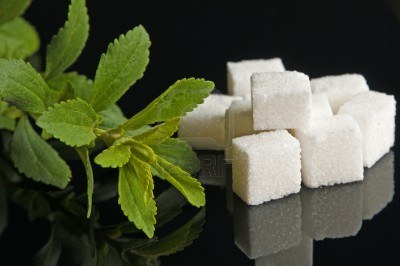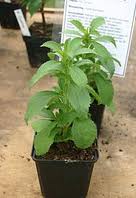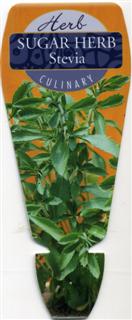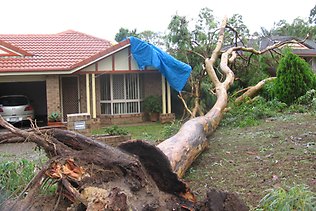
February 2013
The Daley News
Stevia the Sugar Spice

 Stevia is a spice that has become famous as a natural replacement for sugar in dessert recipes and drinks such as Pepsi Next. Stevia can be grown in Australian backyards, but did you know that it can be used in the fight against aphids and grasshoppers? ( Learn More )
Stevia is a spice that has become famous as a natural replacement for sugar in dessert recipes and drinks such as Pepsi Next. Stevia can be grown in Australian backyards, but did you know that it can be used in the fight against aphids and grasshoppers? ( Learn More )
Spice Pack Buy 3 Get 1 FREE
Mix and match spices like Vanilla, Stevia, Curry Tree, Ginger and Drumstick. ( View Pack )
Stevia - The Sugar Herb

If you are someone who strives to be self sufficient and you want to steer clear of all the highly refined processed foods that line the supermarket shelves and focus on a healthy, wholefood and home grown diet then growing your own sugar alternative will be right up your alley. Stevia is being promoted and the next best thing in a world where processed foods are packed with sugar and salt, what are our options to choose foodstuff that are not packed with extra sugar.
If used straight from the plant stevia is said to be 300 times sweeter than sugar. If you eat a leaf the first flavour you will taste is a strong sweet taste, this is followed by a flavour that is not unlike aniseed and then the fresh leaf finishes with a slightly bitter after taste. The sweetness lies in the steviol glycosides, stevioside and rebaudioside, these active ingredients are isolated in extracts, with stevioside being the more bitter of the two and rebaudiosde the sweeter.
 Stevia is easy to grow and adaptable. It is also a beneficial companion plant as most insects do not like it, in fact the very sweetness that we crave may be to deter insects such as aphids and grasshoppers from eating the leaves as the stong sweetness is not to their liking. Stevia plants do best in a rich loamy soil, young plants are sensative to frost so plan to plant during the warmer months and make sure you young plants have perfect drainage. The fresh leaves can be harvested during the growing season to be used immadiatley. For drying the leaves should be harvested in the autumn as late as possible as cooler temperatures and shorter days will concentrate the sweetness in the leaves. To harvest simple cut back the plant to about 10cm and then strip the leaves off the branches for drying, the very tips of the shoots may be added in with the leaves as these are also very sweet. In a frost free climate the plants will survive winter outside and will continue to be productive for 2-3 years, after 3 years plants will become tired and should be replaced. In cold cliamtes grow as an annual.
Stevia is easy to grow and adaptable. It is also a beneficial companion plant as most insects do not like it, in fact the very sweetness that we crave may be to deter insects such as aphids and grasshoppers from eating the leaves as the stong sweetness is not to their liking. Stevia plants do best in a rich loamy soil, young plants are sensative to frost so plan to plant during the warmer months and make sure you young plants have perfect drainage. The fresh leaves can be harvested during the growing season to be used immadiatley. For drying the leaves should be harvested in the autumn as late as possible as cooler temperatures and shorter days will concentrate the sweetness in the leaves. To harvest simple cut back the plant to about 10cm and then strip the leaves off the branches for drying, the very tips of the shoots may be added in with the leaves as these are also very sweet. In a frost free climate the plants will survive winter outside and will continue to be productive for 2-3 years, after 3 years plants will become tired and should be replaced. In cold cliamtes grow as an annual.
 Sun dry by spreading the leaves on a mesh screen or net, the quicker they dry the sweeter the dried herb will be. Air circulation is more important than heat at this stage. Once your leaves are dried crush the leaves into a fine powder, a coffee grinder will make this step easy. Once you have your powdered leaf you can also make a liquid extract by adding 1 cup of warm water to 1/4 cup of podwered leaves. Steep for 24 hours and then refridgerate.
Sun dry by spreading the leaves on a mesh screen or net, the quicker they dry the sweeter the dried herb will be. Air circulation is more important than heat at this stage. Once your leaves are dried crush the leaves into a fine powder, a coffee grinder will make this step easy. Once you have your powdered leaf you can also make a liquid extract by adding 1 cup of warm water to 1/4 cup of podwered leaves. Steep for 24 hours and then refridgerate.
Stevia is not eaten to fuel our bodies but it is used to satisy our desire for sweet treats. There are studies being carried out with regard to its benefit to diabetics and anyone interested in this should application do some research and speak with a qualified health practioner. Some people suffer from allergic reaction to stevia, if you are allergic to ragweed, chrysanthemums or daisies you would be best to avoid using stevia.
Ginger
Ginger is a truely wonderful plant to grow. Freshly harvest ginger is full of zing and pungent, glorious flavour, it is is hot and fragrant. The juice form old ginger roots is especially potent while the fleshy young rhizomes are juicy and mild in flavour.
Cyclone Oswald - "Fall" Proof Lesson on Big Trees
 Recent storms demonstrated how bad weather and shallow root systems do not mix. When Cyclone Oswald hit Eastern Australia, many large fallen trees like Jacarandas were littered across major cities, with some trees falling on houses. What are some solutions?
Recent storms demonstrated how bad weather and shallow root systems do not mix. When Cyclone Oswald hit Eastern Australia, many large fallen trees like Jacarandas were littered across major cities, with some trees falling on houses. What are some solutions?
Solution 1: Do not plant large trees close to your house, plant Dwarf Fruit Trees Instead
Solution 2: If you already have a large tree then prune it frequently.
Solution 3: A Feijoa Hedge is an example of using hedges to stop wind year round.
Solution 4: Research root systems of large trees before you plant them eg. a Pecan Nut Tree can have up to a 10m tap root giving it a better chance of survival in strong winds.
Remember To "Like" us on Facebook & "Follow" Us on Twitter








